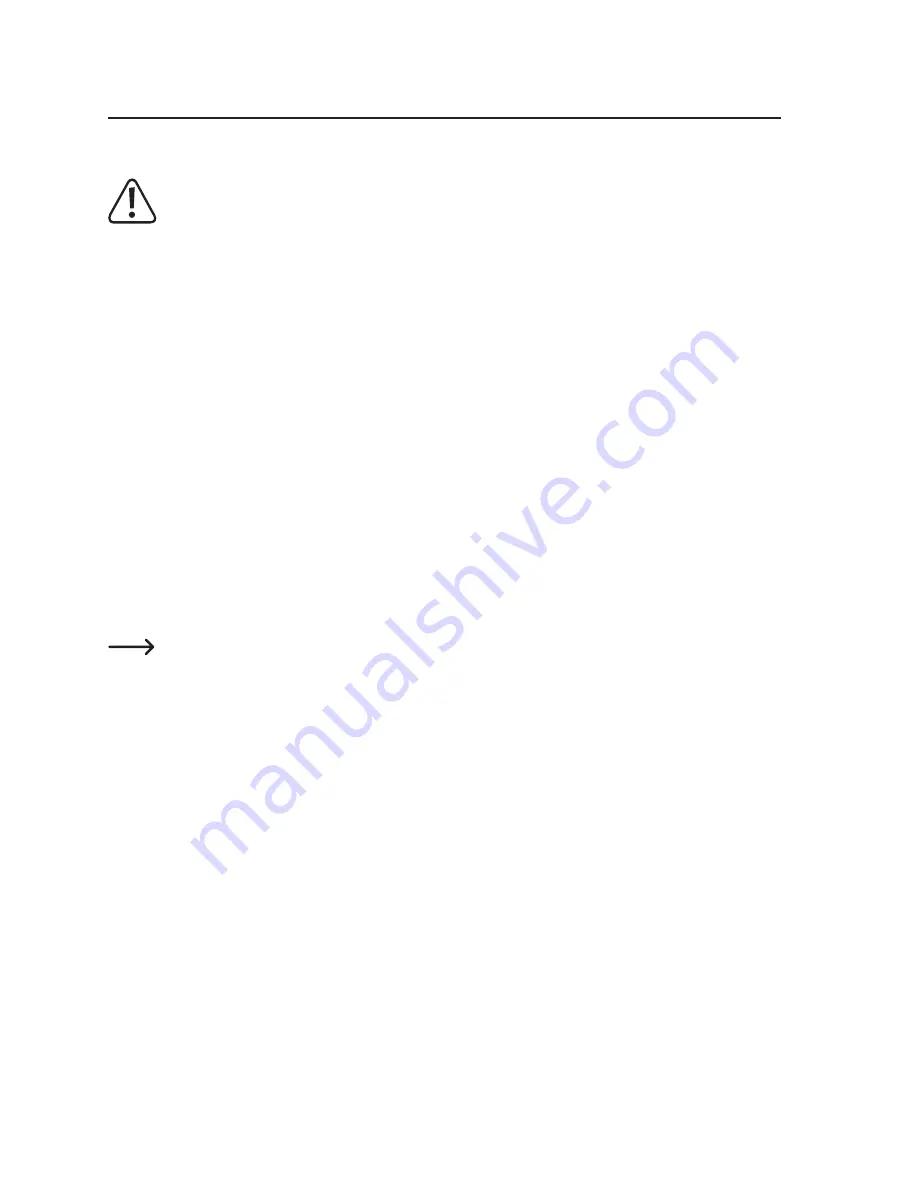
19
12. First take-off
a) Starting the quadcopter
You must learn how to use and control a remote-controlled quadcopter. If you have not driven a similar
model before, proceed with caution and learn how the model reacts to remote control commands. Be
patient! Refer to the instructions in section 11.
Do not take any risks when using the product! Always use the model responsibly, otherwise you may
endanger yourself and your surroundings.
Ensure that the quadcopter battery is fully charged.
Switch on the quadcopter (using the button in the middle of the chassis). The LEDs in the chassis will start to flash
once per second. The (red) LEDs should face backwards (towards you) and indicate "backwards".
Place the model on a level, smooth surface (e.g. stone floor). Carpets/rugs are not suitable, as the quadcopter may
get caught.
Switch on the remote control using the on/off switch. The remote control will beep to indicate that it is switched on and
the LED indicator on the remote control will start to flash.
Push the left-hand control pad (figure 4, position 4) forwards, and then pull it backwards. The LED indicator on the
remote control and the LEDs in the quadcopter will stay constant. Move the left-hand control pad back into the neutral
(central) position.
The quadcopter is now paired with the remote control and ready for use.
Press the "Automatic take-off/automatic landing" button (figure 4, position 5) to start the rotors. The rotors will start
and the model will take off automatically.
Increase the rotor speed by slowly moving the left-hand control pad forwards until the quadcopter rises and hovers in
front of you at a height of approximately 1.5 m.
Avoid sudden and excessive movements. Observe whether the quadcopter drifts, and if so, in which direc-
tion it drifts. If the quadcopter drifts sideways ("roll") or forwards/backwards ("pitch"), move the right-hand
control pad in the opposite direction.
To land the quadcopter, slowly pull the left-hand control pad backwards when the quadcopter is in the desired landing
position and wait until the quadcopter reaches the ground. A firm landing is permissible and should not be corrected
with abrupt commands.
To turn off the rotors, pull the left-hand control pad (figure 4, position 4) downwards for approximately two seconds
until the rotors stop moving. Alternatively, press the "Automatic take-off/automatic landing" button (figure 4, position
5) again.
Try to land the quadcopter in a vertical position (like a helicopter). Avoid landing at high horizontal speeds (like an
aeroplane). If you have not already done so, switch off the motors after landing.
Practice take-off and landing a few times to get a feel for the quadcopter. Once you are reasonably confident, you
can start controlling the flight direction using the yaw, pitch and roll functions (see instructions in section 11). Always
move the controls slowly and practice a few times before attempting a new manoeuvre. The first flights should not last
longer than 30 to 60 seconds.
Once you are familiar with how the quadcopter responds to your commands, you can practice other manoeuvres.
Start with simple manoeuvres (e.g. moving 1 metre forwards/backwards (pitch function)), and then practice tilting left/
right (roll function). Once you have practised these manoeuvres, you can practice circles and figures of eight.
To switch off the quadcopter, switch off the rotors after landing and move the on/off switch on the quadcopter to the
"OFF" position (the LEDs will turn off). Then switch off the remote control.
Summary of Contents for Pocket Drone FPV
Page 1: ...Operating Instructions Electrical quadrocopter Pocket Drone FPV RtF Item No 1642774 ...
Page 38: ...38 ...
Page 39: ...39 ...







































